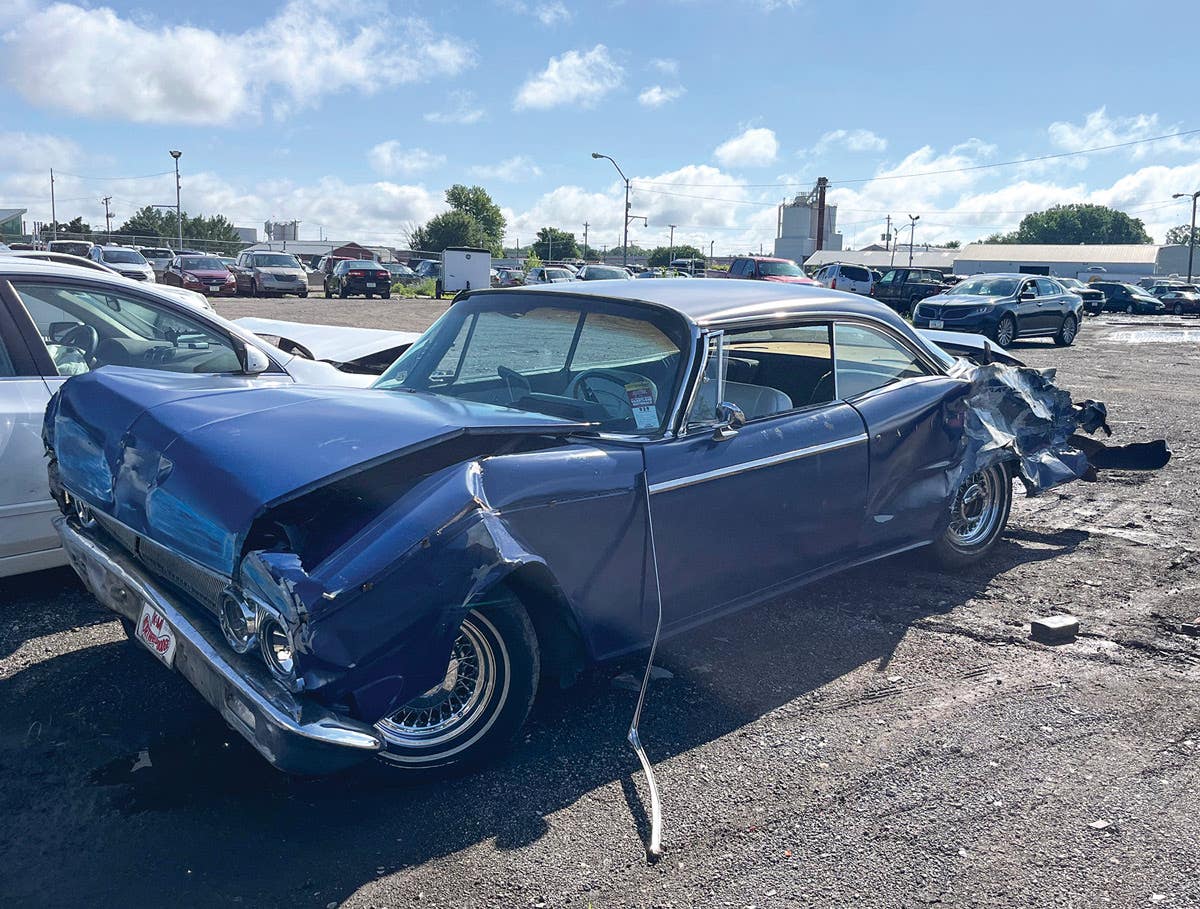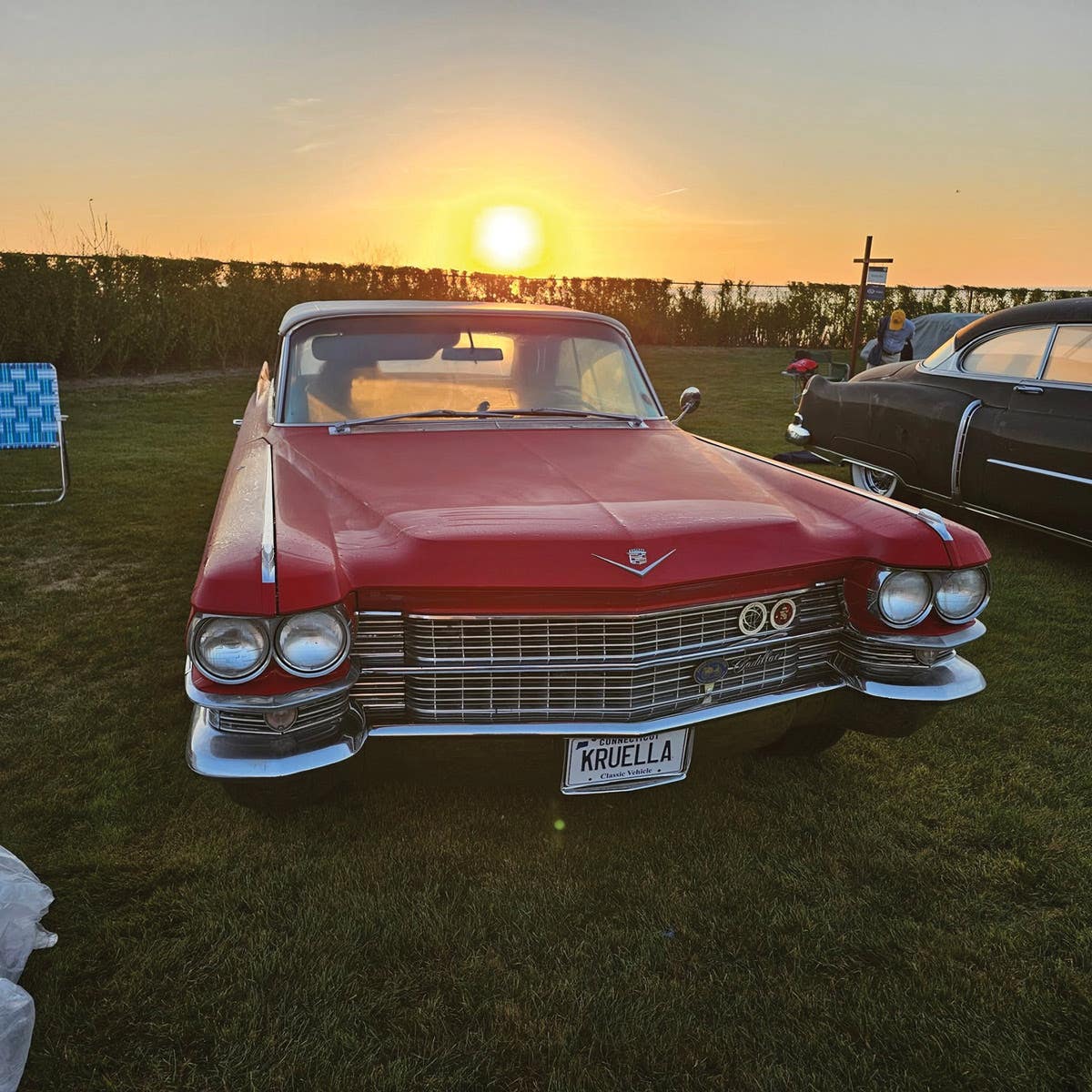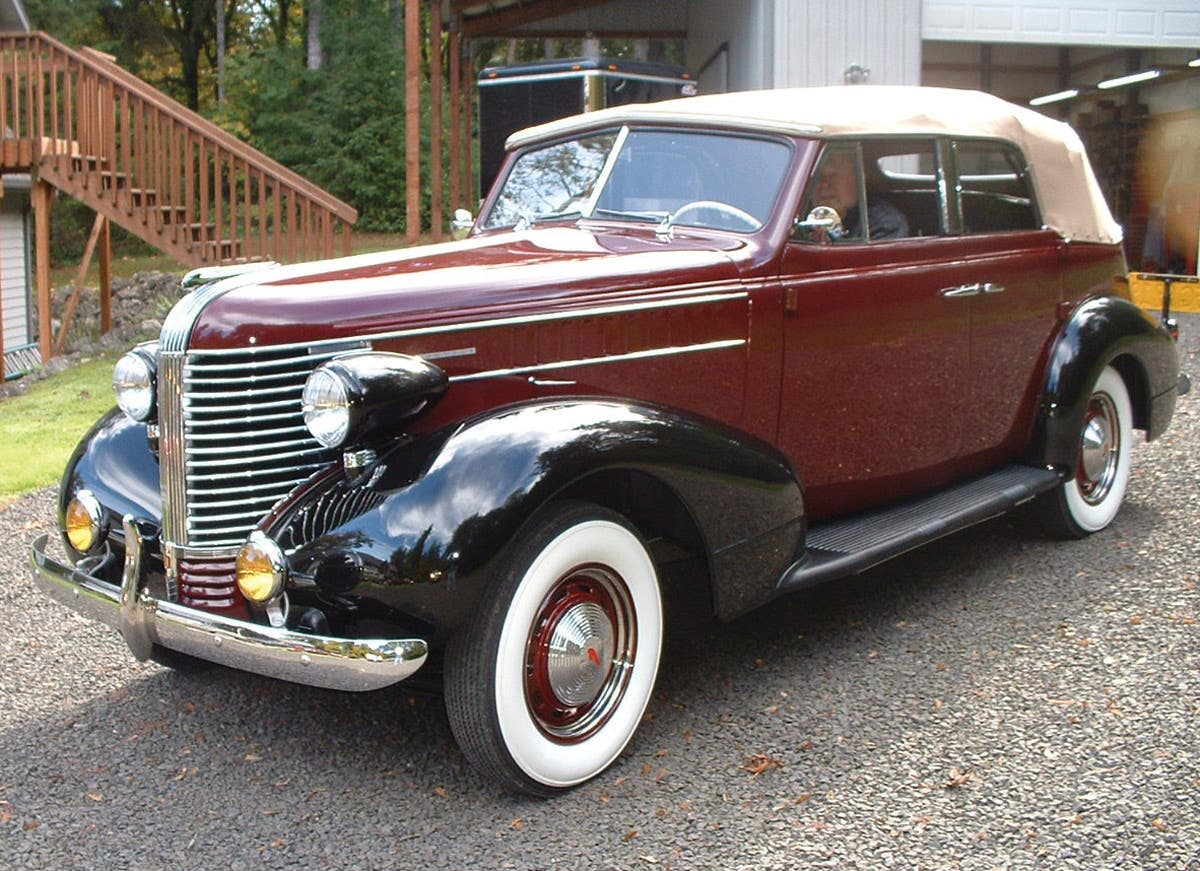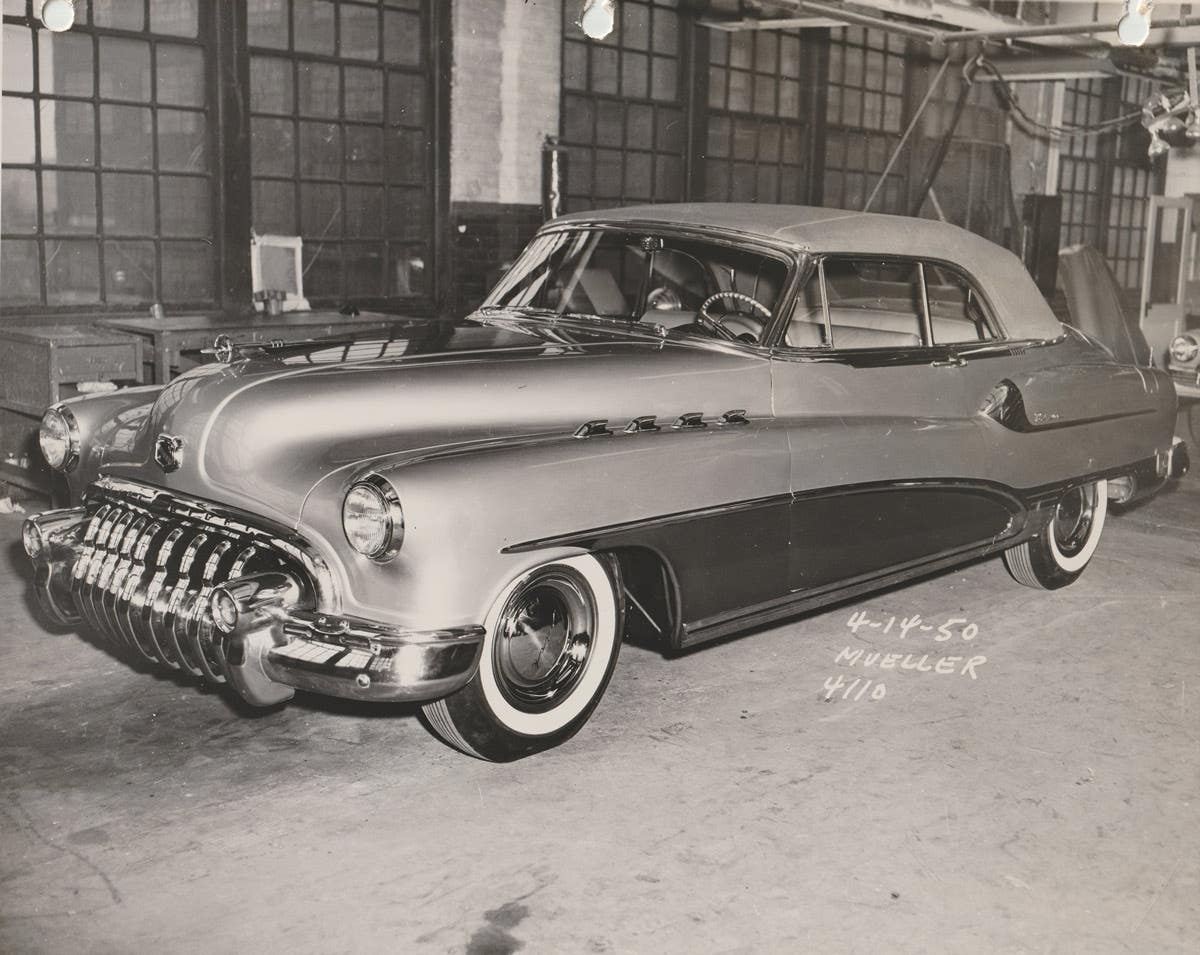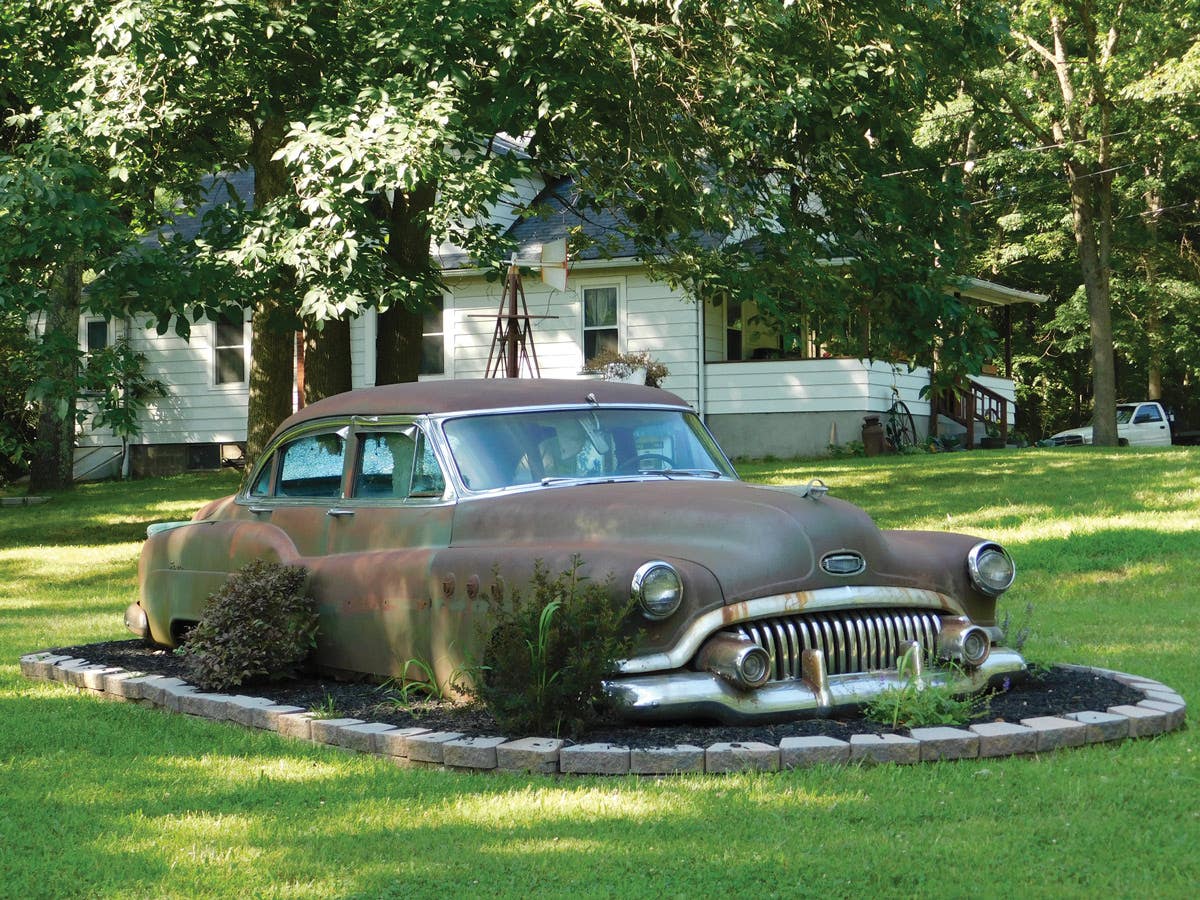Car of the Week: 1930 Cord Cabriolet
Mark & Diane Besser have a type: low, sleek and sporty, with room for two. They landed a very well-preserved 1930 Cord Front Drive (L-29) Cabriolet to fit the bill.
Mark and Diane Besser have a type: low, sleek and sporty, with room for two just people. The Bolivar, Mo., residents have some pretty spry rides that fit that description, from a Muntz Jet to a Woodhill Wildfire and a Kaiser-Darrin, among other sporty rides. It should be no surprise that when Mark went looking to add a prewar sports machine, he went looking for an Auburn, Cord or Duesenberg and eventually landed a very well-preserved 1930 Cord Front Drive (L-29) Cabriolet.
“I just always loved that car,” Besser says of the Cord Cabriolet. “To me, that long hood and that body was just perfect for a 1930s car.
“I searched for one for a few years until I found one I could afford. I went out to Arizona to get one at auction, but I couldn’t get that one.”
A few years later, Besser saw another Cord Front Drive Cabriolet coming to auction from a collection that also included an Auburn Speedster and a Duesenberg.
“I had been going to RM Auctions and I saw their literature and it was one of the feature cars for that 2018 auction in Auburn,” Besser recalled. “I actually wanted the Auburn Speedster, and I did bid some, but not far enough. This was my second choice.”
Calling the Cord Cabriolet a “second choice” is like comparing brands of caviar — all are premium delicacies with different experiences. Both the Auburn 851 Speedster and the Cord Cabriolet were products of the Cord Corp., and both were the sportiest cataloged body types offered by their makers. And while the Auburn Speedster has a more unique body design than its contemporaries, the Cord L-29 has a far more unique mechanical configuration than all but one of its contemporaries.
it came from the Pacific Northwest before going to a Texas collection. Mike Eppinger
Developing the Cord Front Drive
The idea of front-wheel drive had been toyed with since shortly after the dawn of the automobile. Even before 1900, Australian Henry Sutton had offered his front-drive Autocar in 1899, and it was soon followed by several other front-drives built in limited quantities around the world.
By the mid 1920s, race car builder Harry A. Miller had developed a successful front-wheel-drive car that made a strong debut at the Indianapolis 500 as the Locomobile Junior 8 since the family of the race car’s owner, Cliff Durant, owned the Locomobile firm. Drivers Dave Lewis and Bennett Hill raced the Junior 8 race car to a close second-place finish at the 1925 Indy 500. Had they not encountered a delay in the pits during a wheel change, the front-drive car might have placed first. In fact, the car was so successful that Miller followed up with a series of front-drive race cars. Development of other front-drive race cars from additional builders followed, notably a car built for the 1927 Indianapolis 500 by race car driver Tommy Milton and engineer Cornelius Van Ranst.
By 1926, E.L. Cord was in control of the Auburn Automobile Co. of Auburn, Ind. His strong interest in cars, and the automobile industry in general — coupled with his keen business mind and incredible work ethic — had taken him from Moon car salesman to head of the Auburn Automobile Co. from which he built an automotive empire. While in charge of Auburn, Cord took notice of the novel front-wheel-drive race cars, and having purchased Duesenberg Motors Corp. in 1926, was certainly connected with the Indianapolis legends who compete there against Duesenberg race cars. The prospect of a front-wheel-drive passenger car greatly interested Cord, and in 1927 he contracted Harry A. Miller to help the Auburn Automobile Co. develop one such car for the open road. The Miller front-drive race cars were difficult to shift, a problem that remained during the development of the front-drive passenger car, so Van Ranst was brought on to help overcome the hurdle using his knowledge gained from his 1927 race car. Along with Tommy Milton, Van Ranst had designed their own Miller-powered front-wheel-drive race car. With the additional work of men from the crucible racing, including Leon Duray and Leo Goossen, a drivable prototype dubbed the L-27 was completed for Cord in 1927 within Miller’s shop in Long Beach, Calif., utilizing a body from a 1927 Auburn sourced from a local dealer. During the development of the Auburn Automobile Co.’s forthcoming front-drive car, Cord had been regularly monitoring progress, even traveling to the Golden State for updates.
In making the front-wheel-drive layout work in a passenger car, the straight-eight engine and three-speed manual transmission assembly were reversed, putting the transmission in front of the engine, and the differential became the front axle with a Cardan-type universal joint to transfer power to the front wheels. As on a Miller race car, the brakes were mounted inboard.
When the prototype was completed, it was successfully driven from California to Indiana where further development continued into 1928, including giving the new front-drive passenger car its own unique look.
which has a reverse shift pattern from the standard H. Mike Eppinger
Given the novel feature of front-drive, the front-mounted differential was incorporated into the new car’s styling by Alan Leamy, the Auburn Automobile Co. designer also responsible for the look of the Model J Duesenberg. Leamy penned an elegant fender, grille, hood and headlamp ensemble just as beautiful as on the Duesenberg, yet unique in its own right — even when discounting the front-drive car’s large, round differential cover below the grille.
Mounting the differential at the front of the car allowed the Cord to have a lower profile, as the passenger compartment did not have to be mounted above a rear axle. By the time production of the Cord began in mid 1929 at Auburn, four low-to-the-ground production bodies were offered: a four-door Brougham without quarter panel windows; a four-door sedan with quarter windows; a four-door convertible Phaeton; and a two-door convertible Cabriolet. The new car was advertised as the Cord Front Drive, the L-29 designation only being used internally by Auburn Automobile Co. employees.
Although the Auburn Automobile Co. was a small operation compared to General Motors, the Ford Motor Co. and Chrysler Corp., E.L. Cord had gained much respect and fame for his efforts to turn around the Auburn brand, for saving Duesenberg and overseeing the development of the Model J, and for building an automotive empire by purchasing many of the suppliers of parts to his company’s vehicles. With having taken so much interest and leadership in the front-wheel-drive automobile’s development, and for his recognizable name, Cord was certainly justified in naming the car after himself.
The Cord comes to market
The Cord Front Drive hit showrooms right about the time Wall Street saw the stock market crash in October 1929. With prices ranging from $3,095 for the sedan and Brougham to $3,295 for the Cabriolet and Phaeton, the Cord was considered a high-priced car competing in the same range as the Chrysler Imperial. That, along with its new technology, made it a tough sell. In 1929, just 1,819 were sold, followed by 1,873 in 1930, another 1,243 in 1931 and just 58 in 1932. Although not impressive figures, Cord production totaled thousands more than the only other front-wheel-drive passenger car on the market, the similarly priced Ruxton automobile, which had a lifespan matching that of the Cord Front Drive. E.L. Cord had hoped to have the first front-wheel-drive automobile on the market, and he beat the Ruxton by just months.
In addition to building the first mass-produced front-wheel-drive car in the Cord, the Auburn Automobile Co. had also developed the first X frame to be used in an automobile. The X frame was found to be necessary to reduce body and chassis twist while keeping the Cord’s weight low.
Although production likely didn’t meet the Auburn Automobile Co.’s expectations, management knew it was a good idea and used the gained knowledge to build a second front-drive car a few years later, the 1935 Cord 810 and 1936 Cord 812.
A fine survivor
Less than 10 percent of the 5,000 or so Cord Front Drives built are estimated to still remain. Besser’s Cabriolet remains an excellent survivor, having never fallen into disrepair. The car retains much of its chassis paint, and has only seen one repaint and reupholstering.
“You can still see the original paint on the frame of the car,” Besser says. “That car has never deteriorated; the wood is still original, all of the body tags are still there. When they were certifying [in Auburn], Ken Clark, who restores these, told me he had never seen all the body tags that mine has, because the wood on the others rotted away. It shows 67,000 miles, and I believe it to be true.”
Clearly, the Cord had been carefully enjoyed throughout its past, and Besser continues that tradition. Thanks to its mellowed patina, he isn’t afraid to enjoy it in on the open road. He regularly takes it to local shows and drives it in parades, so he’s well accustomed to its road manners.
“I have had it in some parades,” Besser says. “They say they overheat, but we had it in the Route 66 parade and it doesn’t overheat. It’s the only car I have put in that parade that didn’t overheat.”
Besser also says that the Cord drives great when it’s underway, but the front-wheel drive makes it difficult to steer from a start until its speed reaches about 5 mph. He also said a first drive in the car would take some getting used to due to the engine and transmission being reversed from a standard car.
“The hardest part is the gearshift,” he notes. “Your H pattern is the same but reversed, so you have to think before you shift and that takes getting used to. At first, I was taking off in third gear. I didn’t realize it, because it has enough torque that it would still take off.”
The Cord had been sitting in Richard L. Burdick’s collection before Besser bought it at auction, and he said it has only needed a master cylinder since he bought it. Since then, it’s always been ready for a drive.
“It’s a great car,” he said. “They are just built so good. You don’t ever worry about them. It can sit, but it will always start — it never fails.”
Love Cords? Here are a few more articles for your reading enjoyment.
SHOW US YOUR WHEELS!
If you’ve got an old car you love, we want to hear about it. Email us at oldcars@aimmedia.com
If you like stories like these and other classic car features, check out Old Cars magazine. CLICK HERE to subscribe.
Want a taste of Old Cars magazine first? Sign up for our weekly e-newsletter and get a FREE complimentary digital issue download of our print magazine.
Angelo Van Bogart is the editor of Old Cars magazine and wrote the column "Hot Wheels Hunting" for Toy Cars & Models magazine for several years. He has authored several books including "Hot Wheels 40 Years," "Hot Wheels Classics: The Redline Era" and "Cadillac: 100 Years of Innovation." His 2023 book "Inside the Duesenberg SSJ" is his latest. He can be reached at avanbogart@aimmedia.com



